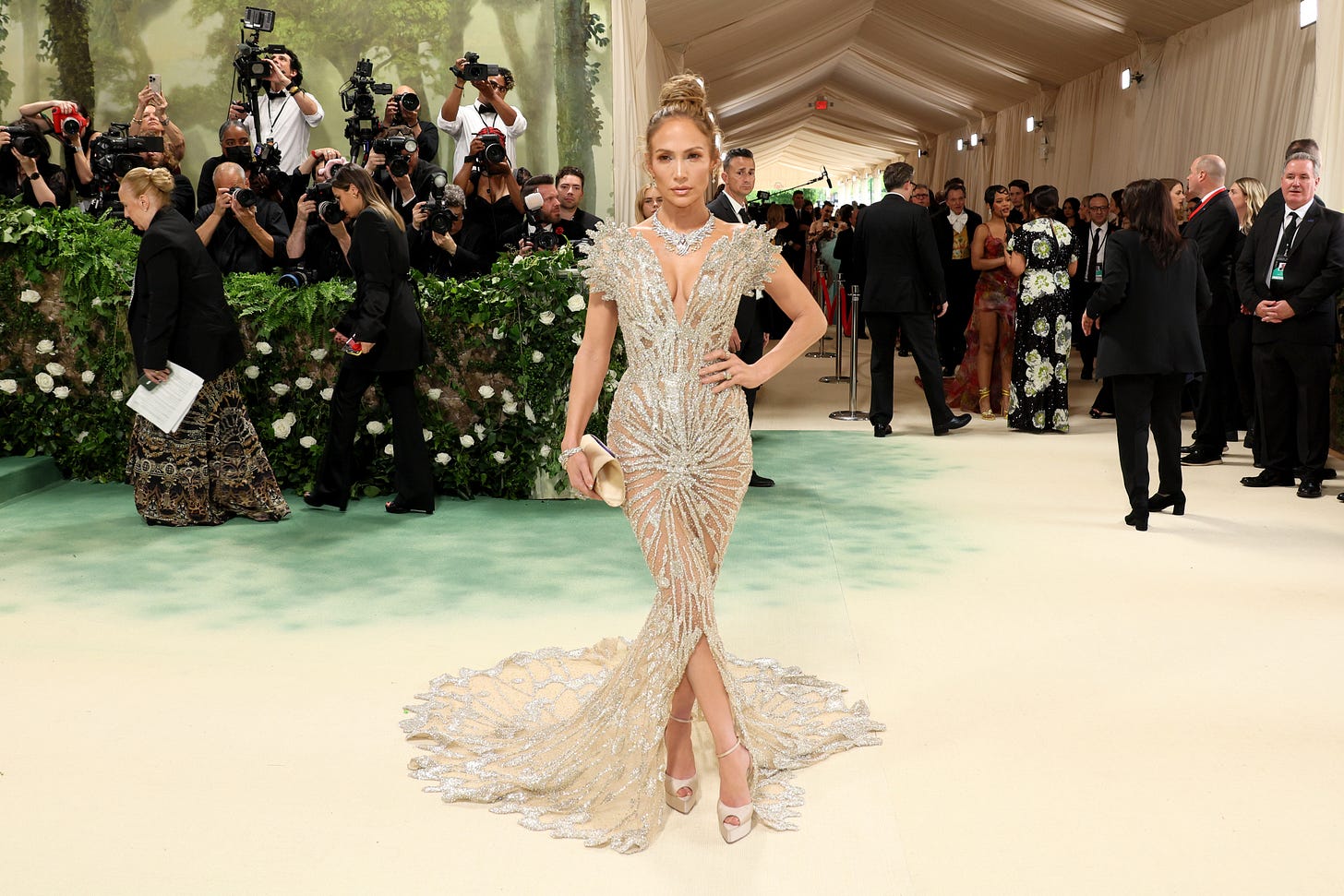The Met Gala: A Confluence of Fashion and Technology
High Fashion Gets High Tech at the 2024 Met Gala.
The Met Gala, known for its extravagant themes and the stunning fashion it inspires, is embracing a futuristic vision in 2024 with an emphasis on the fusion of technology and high fashion. This year's theme, "The Garden of Time," is not just a nod to the natural and ephemeral aspects of fashion but also a celebration of how technology can enhance our sensory experience of it.
Bad Bunny and Zendaya Angela Weiss/AFP via Getty Images
The 2024 exhibition, curated by Andrew Bolton, is titled "Sleeping Beauty: Reawakening Fashion." It focuses on reanimating the sensory aspects of historical garments that are too fragile to be worn or even placed on mannequins. The exhibit showcases around 250 items, including pivotal designs by Christian Dior, Elsa Schiaparelli, and Alexander McQueen, presenting them not as static pieces but as vibrant elements of historical narrative and craftsmanship.
For instance, the Christian Dior "Venus" ball gown from the fall/winter 1949-50 collection, known for its intricate design and historical significance, is displayed in a way that emphasizes its artistic and sensorial features. This gown, along with others like the Alexander McQueen dress from spring/summer 2001, illustrates the potential of technology to 'reawaken' the sensory experiences these garments once evoked. By using advanced technologies such as light projection, soundscaping, and even AI, the Met aims to create a multi-sensory experience that allows visitors to perceive these pieces not just visually but through a recreated atmosphere of their times.
This innovative approach preserves the integrity of fragile items and opens up new dialogues about how fashion interacts with technology. The integration of tech in this year's Met Gala extends beyond preservation and presentation to include the construction and customization of new garments showcased at the event.
The technological integration into fashion design is increasingly significant, especially in the creation of Met Gala outfits. Designers and brands are leveraging tools like 3D printing, fabric scanning, and AI-driven design to push the boundaries of customization and creativity. These technologies allow for precision in design and fit, making it possible to create complex, intricate pieces that match the thematic aspirations of the Gala while catering perfectly to the wearer's form.
As the fashion industry continues to evolve, the interaction between technology and high fashion at events like the Met Gala provides a platform for showcasing cutting-edge innovations. It also sets a precedent for how technology can be seamlessly integrated into fashion, influencing trends and expectations in high-fashion circles and beyond.
Singer and actress Jennifer Lopez. Angela Weiss/AFP via Getty Images
The Met Gala and Technological Presentation
"Sleeping Beauties: Reawakening Fashion," is a clear indicator of how deeply technology has penetrated the realm of fashion presentation, transforming static exhibits into dynamic, interactive encounters that engage more than just the visual senses.
One of the key technologies being employed is the Pepper's Ghost illusion, a technique that uses glass, light, and special arrangements to create ghostly three-dimensional images. This old stage trick, revamped with modern technology, will bring historical garments to life, allowing them to be seen in motion as if worn by invisible models. Such use of technology not only enhances the viewing experience but also helps bridge the gap between historical context and contemporary perception, making each piece more relatable and impactful.
Moreover, the exhibit aims to incorporate elements like augmented reality (AR) to provide background stories and details about the craftsmanship behind each piece. By simply pointing a smartphone at a display, visitors can see layers of information unfold, offering insights into the intricate processes of design and creation. This not only educates the audience but also deepens their appreciation for the artistry and innovation inherent in these fashion pieces.
At the Met Gala, where the spotlight often shines on the flamboyant and the fantastical, these technologies serve a crucial role in contextualizing and enhancing the artistic statements made by the garments on display. These technological interventions are reflective of a broader shift within the fashion industry towards a more immersive, interactive, and personalized consumer experience.
Such technologies are making their way onto the red carpet and into fashion exhibitions, illustrating a future where design and digital innovation meet on equal footing. The implications for events like the Met Gala are profound, suggesting that future galas will not only showcase fashion but also the latest in design technology, presenting garments that are at the forefront of both style and innovation.






